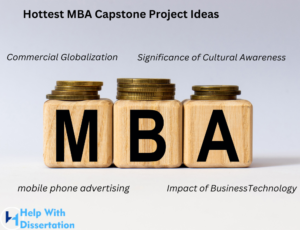Guideline for Writing OBU Resubmission Statement
After checking Oxford Brookes University student info page, ‘My Record & Results’ confirmed you didn’t make the 50% pass mark. But you still can inject new life into your ACCA aspirations with our proven guideline for writing OBU resubmission statement.
Here’s to the 500-word appendix towards your BSc (Hons) Degree in Applied Accounting RAP resubmission. In this article, I’ll show you unique approaches to address the marker / moderator’s feedback.
Why Do Many Students Fail in ACCA-OBU Projects?
Before you take a second shot at your project, go through the Research and Analysis Project Information Pack guidelines on OBU website.
The following 5 reasons contribute to many research project failures.
Reason #1: Weak or Zero Referencing
Plagiarism is an academic offense. Every submission goes through Turnitin and other referencing checkers. Make sure your presentation acknowledges every source used in your research.
The latest edition of Havard citation technique is a great go-to when drafting a resubmission. You can also use other referencing techniques in your citation.
Reason #2: Not Using Information Technology
Your initial report couldn’t pass because there was no Excel Sheet. Yes, the marker wants to see those formulas you used in your work!
Reason #3: You Didn’t Hit Word Count Target
Markers expect an average of 7,500 words from your research report. A Skills and Learning Statement should max at 2,000 words.
If your submission is too wordy, it means you substitute fluff for content. Under-achieving the word count implies you’ve not covered the topic exhaustively.
Reason #4: Failure to Relate Research Theory and Analysis to the Project
Primary research isn’t a mandatory requirement. However, a critical analysis needs to relate the theory to your research project whenever there’s original research.
Moderators and markers alike frown on projects whose theory doesn’t identify key issues in the organization under study. Use theories to design research instruments such as questionnaires and interviews.
Reason #5: Not Including Powerpoint Slides Fails You!
Presentation slides should capture the full extent of project findings. Failure to present them to your mentor means your SLS face-plant at grading.
Basic RAP & SLS Resubmission Rules
When preparing for the new project, you’re free to keep the original title or to choose among the 20 OBU-approved topics.
Pursuant to an Academic Conduct Officer’s investigation, they may instruct you to change both the title and the organization. In this case, any Research Report credits previously earned will NOT be carried forward.
Students who have failed either of the RAP parts should check comments on the feedback forms. Please contact the ACCA team on acca@brookes.ac.uk if your work was submitted prior to the P40.
Mentor requirements differ depending on circumstances. If for example you passed the SLS, you don’t have to meet your mentor again (unless you’ve changed the project topic, in which case you’ll have to enlist a registered mentor).
A Practical Guide to Writing a Convincing Resubmission Statement
Important Note
There’s nothing like a “Resubmission Statement Template” in the world!
Also, don’t copy-paste what your classmate writes in their resubmission.
It’s wise to first ask yourself these four questions before you draft an OBU resubmission statement:
- What have I learnt from my mentor during the meetings and the presentation feedback?
- How well did I demonstrate interpersonal and communication skills in the project?
- After setting the RAP research objectives, to what extent did I achieve them?
- How has the RAP project impacted my studies and accountancy profession?
10 Usable Tips to Write an OBU Resubmission Statement
Although a resubmission statement doesn’t carry any assessment criteria, a shoddy copy is a precursor to another failed attempt. Use these practical tips for a convincing explanation.
Understand Your Marker / Moderator Feedback First
Before diving into the statement, first understand the mentor’s feedback. Identify areas that the assessor marked for improvement.
Relook at the research methods, findings and analysis, and the presentation itself. Let the feedback form a foundation for your resubmission.
Be Specific and Clear About Changes
Avoid vague statements and be specific about the changes you’ve made. Pinpoint the particular sections or aspects that required attention, then show the steps you’ve taken to address each issue.
This shows your commitment to rectifying the identified weaknesses.
Show What You’ve Learned
Demonstrate what you’ve learned throughout the failed project. Highlight how the provided feedback has influenced your understanding and approach.
Show the marker you’ve not just made changes, but also comprehended the points of weakness.
Review Research Methods
If research methods were a point of contention, explore all the adjustments you made. Discuss any additional resources consulted, modifications in data collection, or improvements in sampling techniques.
This showcases your dedication to robust research practices.
Clarity in Analysis
For analysis-related feedback, ensure your resubmission statement communicates a clearer and more insightful interpretation of the findings.
Break down complex ideas into digestible portions. Ensure simplicity without sacrificing content depth.
Sharpen Your Presentation
Combat any flops related to the presentation. This might involve refining your graphs, charts, or general formatting. Add PowerPoint slides and Excel Sheets if they were missing.
Clearly convey how these props contribute to a more polished and professional final submission.
Adherence to Referencing
In the academic world, proper referencing is akin to success. If this was a reason you failed terribly in your initial submission, assure your assessor that you’ve meticulously reviewed and corrected all referencing issues.
An updated reference list reflects your commitment to academic integrity.
Show How You’ve Overcome Time Management Concerns
Acknowledge any time-management challenges that you went through during the previous submission. Clearly illustrate the steps you’re taking to efficiently manage time.
This shows your ability to learn from past experiences and assures the instructor they won’t wait forever for a submission.
Seek Guidance and Consult Your Mentor
If you sought additional guidance from another mentor or any other resources, mention this in your resubmission statement.
You’ll have shown a committed, proactive approach to making improvements in your new project.
Use Formal, Professional Language
Maintain a professional and formal tone throughout your resubmission statement. Avoid colloquial expressions and informal slurs.
Present your improvements in an academic voice, even though the resubmission statement won’t be graded.
Recap
Nail your OBU RAP resubmission with a killer statement. Tackle feedback head-on, dig deep and uproot analysis gaps. Flaunt your academic growth and pledge to be a better learner.
Self-reflect, address previous loopholes, and don’t rush over the resubmission statement. It’ll set the tone for success, so invest every hour on it wisely!
Are you an ACCA student facing challenges writing OBU RAP thesis, SLS or resubmission statement? our OBU thesis help service is tailored to assist you achieve your goasls
 Written by: Amy Kaufman DNP, MSN, RN
Written by: Amy Kaufman DNP, MSN, RN
